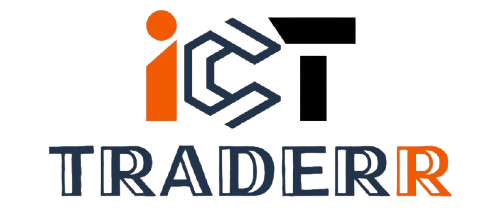In recent years, ICT (Inner Circle Trader) trading has emerged as a popular strategy among forex and cryptocurrency traders seeking to refine their market analysis and trading skills. Developed by Michael J. Huddleston, often referred to as “The Inner Circle Trader,” ICT trading focuses on understanding institutional trading concepts to anticipate price movements more accurately. This article explores the fundamentals of ICT trading, its key concepts, and how traders can leverage it to succeed in the financial markets.
Understanding ICT Trading
ICT trading is rooted in the belief that financial markets are heavily influenced by institutional players such as banks, hedge funds, and market makers. These institutions operate with significant capital and often employ sophisticated strategies to manipulate price action. The ICT trading approach aims to decode these strategies, allowing retail traders to align their trades with institutional moves and avoid common retail trading traps.
At its core, ICT trading is a blend of technical analysis and price action concepts. It emphasizes understanding market structure, liquidity zones, and key trading sessions to identify high-probability setups.
Key Concepts in ICT Trading
1. Market Structure
Market structure is the foundation of ICT trading. It involves analyzing price movements to determine the overall trend, identify key swing highs and lows, and spot potential reversals. Traders often focus on concepts like higher highs, higher lows (uptrend), and lower highs, lower lows (downtrend).
2. Liquidity Zones
Liquidity is a critical element in ICT trading. Institutional players seek areas of high liquidity to execute large orders without causing significant market disruption. These zones often exist around obvious support and resistance levels, previous highs and lows, and psychological price levels. Traders using ICT strategies aim to identify these zones to predict potential price reversals or breakouts.
3. Fair Value Gap (FVG)
A Fair Value Gap, also known as an imbalance, occurs when there is a visible gap between candlesticks on a price chart. This gap represents an inefficiency in the market, often filled as price retraces. Identifying FVGs helps traders anticipate potential entry or exit points.
4. Order Blocks
Order blocks are areas on the chart where institutions have placed significant buy or sell orders. These zones often lead to strong price movements when revisited. ICT traders learn to recognize bullish and bearish order blocks to time their trades effectively.
5. Optimal Trade Entry (OTE)
The OTE concept is a Fibonacci-based retracement strategy used to identify precise entry points within a trending market. Traders typically look for entries around the 61.8% and 70.5% retracement levels, aligning with the prevailing trend.
6. Kill Zones
ICT trading emphasizes the importance of timing. Kill zones refer to specific trading sessions, such as the London Open, New York Open, or the Asian session. These periods often exhibit high volatility and offer prime trading opportunities.
Benefits of ICT Trading
- Enhanced Market Insight: By understanding institutional trading behavior, ICT traders gain a deeper insight into market dynamics.
- Higher Accuracy: ICT concepts like order blocks and liquidity zones help traders identify high-probability setups, reducing the likelihood of false signals.
- Improved Risk Management: ICT strategies emphasize proper risk-reward ratios and precise entry and exit points, allowing traders to manage their capital effectively.
- Versatility: ICT trading principles can be applied to various markets, including forex, stocks, and cryptocurrencies, making it a versatile approach for traders.
Challenges of ICT Trading
Despite its advantages, ICT trading is not without challenges:
- Steep Learning Curve: Mastering ICT concepts requires time and dedication, especially for beginners.
- Emotional Discipline: Like any trading strategy, ICT trading demands emotional discipline to stick to the plan and avoid impulsive decisions.
- Continuous Practice: ICT trading relies on practical application and constant refinement of skills, requiring consistent effort.
How to Get Started with ICT Trading
- Study ICT Tutorials: Michael J. Huddleston offers a wealth of free tutorials and educational resources online. Start by understanding basic concepts like market structure, order blocks, and liquidity zones.
- Practice on Demo Accounts: Before risking real capital, practice ICT strategies on demo accounts to gain confidence and refine your skills.
- Maintain a Trading Journal: Document your trades, including entry and exit points, reasons for taking the trade, and the outcome. Regularly review your journal to identify strengths and areas for improvement.
- Join Communities: Engage with other ICT traders in online forums and social media groups to share knowledge, insights, and experiences.
Conclusion
ICT trading is a powerful approach for traders seeking to align their strategies with institutional market behavior. By mastering its core concepts—market structure, liquidity zones, order blocks, and more—traders can improve their decision-making and boost profitability. While the journey to mastering ICT trading requires patience and practice, the potential rewards make it a valuable skill for any serious trader. With consistent effort and a commitment to learning, ICT trading can unlock new opportunities in the ever-evolving world of financial markets.
